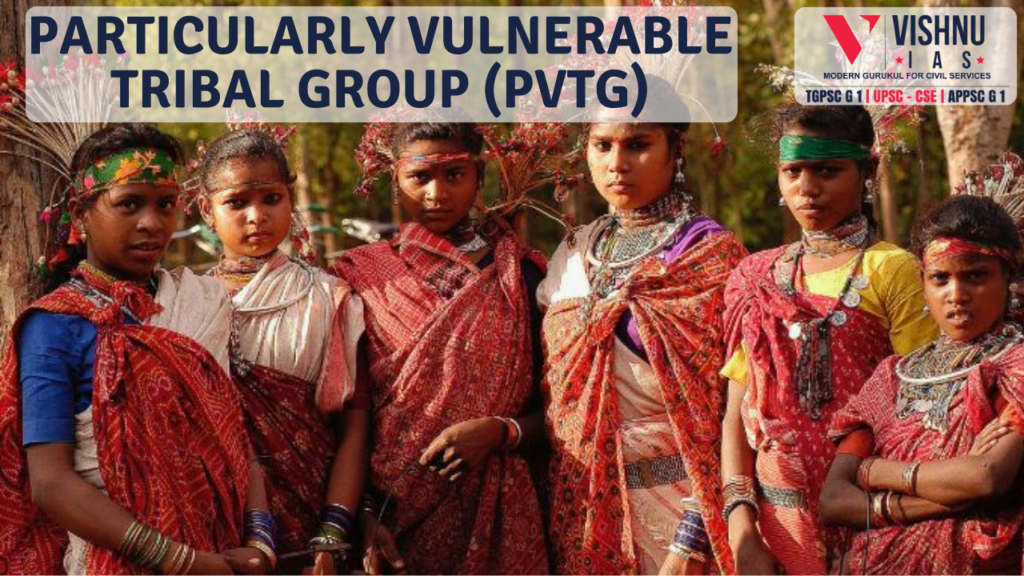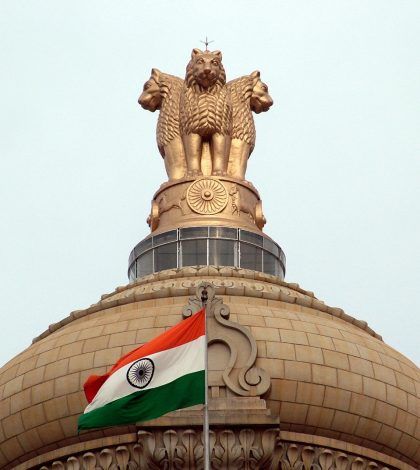Particularly vulnerable tribal group
Recent Welfare Measures for Particularly Vulnerable Tribal Groups (PVTGs)
Approach
- Introduction: Write few facts about the PVTGs
- Body: add comprehensive analysis about the Key Welfare Measures initiated by the Government for the Particularly Vulnerable Tribal Groups (PVTGs) with challenges and limitations. And add why PVTGs were erroneously called Primitive Tribal Groups (PTGs).
- Conclusion: add its contemporary context in recent times
INTRODUCTION
- Definition and Classification: PVTGs are a sub-category of Scheduled Tribes in India, identified as being more vulnerable than other tribal groups. They were previously known as Primitive Tribal Groups (PTGs) until the term was changed in 2006 to avoid derogatory connotations.
- Criteria for Identification: PVTGs are characterized by:
- Pre-agricultural level of technology
- Stagnant or declining population
- Extremely low levels of literacy
- Subsistence level of economy
- Number and Distribution: There are 75 PVTGs spread across 18 states and one Union Territory (Andaman and Nicobar Islands) in India. The highest number of PVTGs are found in Odisha (13), followed by Andhra Pradesh (12)
BODY
- Ministry of Tribal Affairsimplements a scheme in the name of ‘Development of Particularly Vulnerable Tribal Groups (PVTGs)’.
- It is a Centrally Sponsored Scheme having a provision of 100% Central assistance to 18 states and Union territory of Andaman & Nicobar Islands.
- The scheme of Development of PVTGs aims at socio-economic development of PVTGs in a comprehensive manner, while retaining their culture and heritage.
- As a part of the scheme, State Governments undertakes projects that are tailored to cater to sectors like education, health and livelihood schemes for the PVTGs.
Key Welfare Measures
- Pradhan Mantri PVTG Development Mission: Launched with a budget of around ₹24,000 crore, this mission aims to improve the socio-economic conditions of PVTGs by providing basic amenities such as safe housing, clean drinking water, sanitation, education, health, nutrition, road and telecom connectivity, and sustainable livelihood opportunities.
- Eklavya Model Residential Schools (EMRS):These schools provide quality education to tribal children, including those from PVTGs. Over 401 EMRSs have been established, enrolling more than 1.2 lakh students.
- Healthcare Initiatives: Focused efforts are being made to improve healthcare access for PVTGs, including mobile health units and specialized health camps to address their unique health needs.
- Financial Inclusion:Various schemes aim to provide financial services, including bank accounts, insurance, and credit facilities, to PVTG families to enhance their economic stability
- Skill Development and Livelihood Programs:Programs are being implemented to develop skills and provide sustainable livelihood opportunities tailored to the traditional knowledge and practices of PVTGs
- Infrastructure Development:Efforts are being made to improve infrastructure in PVTG areas, including road connectivity, electricity, and internet access, to integrate these communities into the broader economic framework.
Challenges and Limitations
- Implementation Gaps:Despite the initiatives, there are significant gaps in the implementation of these programs. Issues such as bureaucratic delays, lack of coordination among various agencies, and inadequate monitoring hinder the effective delivery of benefits
- Cultural Sensitivity:Many welfare measures fail to adequately consider the cultural practices and preferences of PVTGs, leading to resistance and low uptake of services
- Resource Allocation:The allocation of resources often does not match the specific needs of PVTGs. There is a need for a more targeted approach to ensure that the most vulnerable groups receive adequate support
- Awareness and Accessibility:Many PVTG members are unaware of the available schemes and benefits due to low literacy levels and geographical isolation. Ensuring last-mile connectivity and effective communication is crucial
Why PVTGs Were Erroneously Called Primitive Tribal Groups (PTGs)
The term “Primitive Tribal Groups” (PTGs) was initially used to classify certain tribal communities that were considered more vulnerable than others. This classification was based on criteria such as:
- Pre-agricultural Level of Technology: Many PTGs practiced hunting, gathering, and shifting cultivation.
- Low Literacy Rates: These groups had significantly lower literacy rates compared to other tribal communities.
- Subsistence Economy: Their economies were primarily subsistence-based, with minimal interaction with the market economy.
However, the term “Primitive” was criticized for being derogatory and stigmatizing. It implied a lack of development and perpetuated stereotypes about these communities. Recognizing this, the Government of India renamed PTGs to “Particularly Vulnerable Tribal Groups” (PVTGs) in 2006 to emphasize their vulnerability and the need for special attention without the negative connotations associated with the term “primitive”
Significance of the Initiatives
The significance of these initiatives is:
- Holistic development:These initiatives cover all aspects of socio-economic progress – livelihoods, health, education, and culture.
- Rights-based:Secure land rights, forest rights, and housing rights for PVTGs can protect them against displacement.
- Access to services:Seamless access to welfare schemes, public services, and infrastructure development will be enabled.
- Financial inclusion:Enhanced livelihood opportunities and financial literacy can bring PVTGs into the formal banking system.
- Culture preservation:Conservation of PVTG heritage, art, and language can safeguard their identity.
- Bottom-up approach:Feedback-based planning and localization of schemes based on the needs of specific PVTGs.
The Way Forward
- While government initiatives and budgets for PVTG development have increased, effective implementation on the ground holds the key. PVTGs need to be actively involved in the planning and execution of schemes meant for them.
- Protecting their traditional rights over jal-jameen-jangal is very important.
- Overall, adopting a rights-based approach, ensuring social security and accountability can help PVTGs break out of the cycle of vulnerability.
Anthropology Full Course at Vishnu IAS Academy
What does Course Offer?
- 4 Months (250+ Class Hours)
- Online (App + Web) / Offline / Hybrid Mode of Classes
- Live + Recorded Videos Access For 1 Year
- 2 Hour Live Class From Monday to Saturday (1.5 Hours for Class + ½ Hour for Doubt Solving)
- Foundation to Advanced Level of Teaching
- Simple and Integrated Content
- One Stop Solution Books
- Regular Value Added Content
- Current Affairs & Case Studies Modules
- Daily Answer Writing Practice
- Weekly Grand Tests On Sundays & Evaluation With Guidance and Topper Will be Rewarded
- 500+ Model Answers
- 9 AM – 9 PM Support System
- Free GS Current Affairs
- Free Interview Guidance for Anthropology


